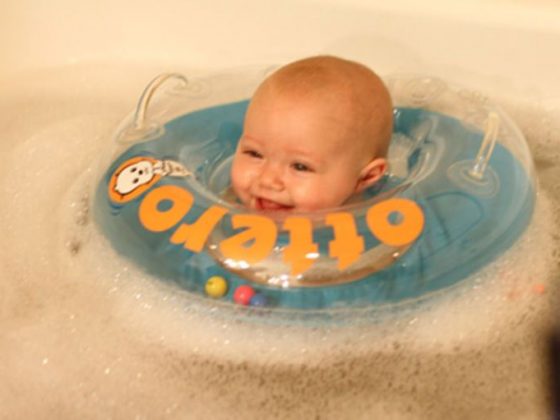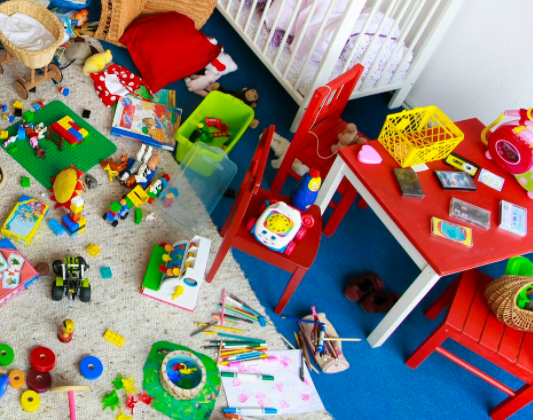Basic Kitchen Safety For Kids
For kids, kitchens area a very intriguing place.
Parents are running around, pulling shiny items from fridges and drawers. Things are going on out of a child’s vision on benches and ovens, and all they want to do is get in on the action!
With all of all this hustling and bustling, your little one’s curiosity, and your often divided attention means that it’s very important to child-proof your kitchen.
Here’s where kitchen hazards can occur and how you can help to minimize risks:
General Kitchen Safety Includes:
- Checking for sharp edges where kids could bang their little head or injure eyes. Install protective corner guards or cushioning for sharp edges.
- Ensure all knobs and handles are secured.
- Block off all electrical outlets with electrical safety plugs.
- Install locks on drawers and cupboards with items that pose risks, such as knives and chemicals.
- Keep spices out of their reach. Many can be dangerous or toxic.
- Use a child-resistant rubbish bin keep your trash locked away behind closed doors in a secured cabinet.
- Get rid of of plastic bags safely by knotting the top before throwing it your garbage bin.
- Keep aluminum foil and plastic wraps away from kids. The dispensers have serrated edges that can cut fingers.
- Alcohol should be locked away out of your kids sight and reach.
Kitchen Appliances
Here’s how to childproof your kitchen appliances.
Stoves
- Ensure stoves, ovens, and burners are certified and working in good condition. If they are fueled by gas, check often that there are no leaks.
- Use back burners where possible. Many accidents happen when a child reaches up and pulls a pot or pan handle, spilling the hot liquids over themselves. When the front burners must be used, turn all handles toward the back.
- Keep flammable objects such as curtains, towels, and oven mitts away from the stove.
- Make sure handles on pots and pans are not loose or wobbly. Otherwise fix, or throw away.
- Make sure to turn your oven off when not in use.
- Be careful when opening a hot oven door when your little one is standing by. The door will be very hot, and hot air will be emitted from the oven possibly burning them.
- Place babyproof stove knob covers on stove and ovens so burners cannot be turned on easily by your little one.
- Check your stove for unexpected hot areas. Some stoves and ovens are not well insulated and the doors our other outside parts get hot enough to cause burns.
- Check the outside of your oven when at a high temperature to make sure it’s not too hot to the touch (should just be warm). If it becomes too hot, install a baby gate in the kitchen while using your oven.
Small Kitchen Appliances
- Unplug toasters, coffee makers, blenders, and any other small kitchen appliances when not being used and store them away of the reach of your little one.
- Use electrical cord shorteners to remove the slack in cords so that the cords are less likely to dangle over the side of the counters.
- If toast or another food becomes lodged in a toaster, make sure to unplug your toaster first before trying to remove it. Try to shake it loose, or use a wooden spoon to tray and dislodge it.
Refrigerator and Freezers
- Install babyproof door locks, to keep the doors shut.
- Remove magnets from your refrigerator doors. Small children can choke on these, and colorful magnets will entice your kids to play near the fridge.
- For added safety measures keep glass items off reachable shelves and never store inedible objects within reach in the fridge.
- Remove doors from old appliances you are replacing as soon as the new ones arrive, as kids like to play and the dangerous of locking themselves in and old fridge are not worth the risks. As soon is your child is old enough to comprehend safety, instruct them to never hide in any appliance.
Dishwashers
- Never leave sharp objects such as knives, inside the dishwasher. Your little one will see you placing cutlery and dishes in and out of the dishwasher and will want to copy you.
- If you must place sharp objects in the dishwasher, ensure that the sharp end is facing downwards, and remove them as soon as the cycle has finished.
- Use a babyproof latch latch on your dishwasher for extra protection.
Dining Area
Whether you have an eat-in kitchen or a separate dining room, observe the following:
- Repair or get rid of old wobbly chairs.
- Slide chairs flush against the table when not used. Don’t let chairs stick out from the table where they may be used as steps for a child to climb on.
- Make sure tabletops are anchored securely to bases.
- Be careful of folding or collapsible chairs and tables. Brace them so they are secure around children. Remove folding tables and chairs when they are not being used.
- Check for protruding nails, splinters, staples and rough or sharp edges. Take a look at the undersides of your tables and chairs for possible hazards.
- Place glassware, and other breakables out of the way behind closed doors.
- Do not keep a cloth on the table. Toddlers are likely to pull it (and everything else on top of the cloth) off the table and onto themselves.

